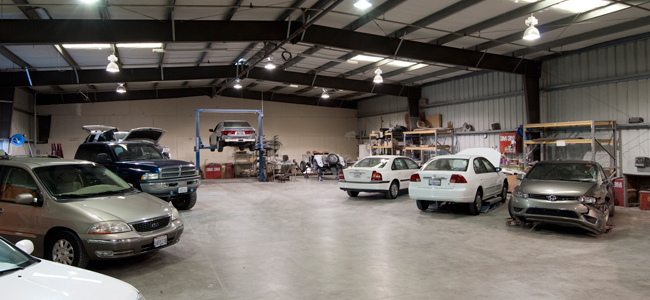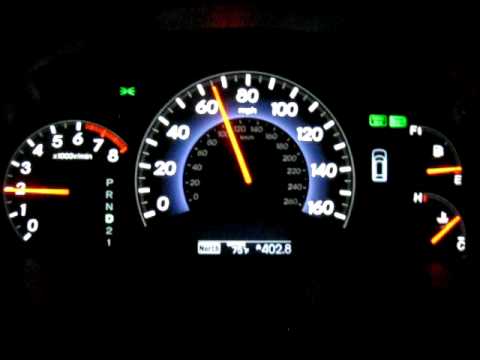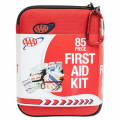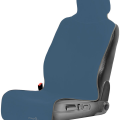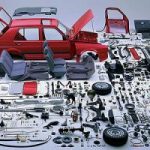Practical Reasons Your Car Should Be “Pimped” As A Commuter
 Unless you’re among the relatively few Canadians who have the luxury of working from home, you’ve got to get behind the wheel every morning to get to work, or hook up with some mode of public transportation. In addition to all the possible annoyances along the way, your commute may not be good for you. In fact, it could very well be harmful to your health. Here’s how it may be hurting you, and what you can do about it.
Unless you’re among the relatively few Canadians who have the luxury of working from home, you’ve got to get behind the wheel every morning to get to work, or hook up with some mode of public transportation. In addition to all the possible annoyances along the way, your commute may not be good for you. In fact, it could very well be harmful to your health. Here’s how it may be hurting you, and what you can do about it.
The Time It Takes To Arrive
As a commuter, you spend a lot of time sitting in your car. Meandering through side streets, onto highways and through congested city streets isn’t the best way to start your day, but most people have no choice. Due to the fact this process takes so much time, it’s important to be aware of how it affects you.
- 74 percent of Canadians take their personal vehicle to work.
- Over 29 percent are up and out of the house by 7:59.
- The average commute time for Canadians is approximately one half hour (25.4 to 32.8 minutes) each way.
- Unfortunately, catching public transportation increases the average commute by almost 50 percent.
The Toll It Takes On Your Body
Unfortunately, the seat in your car was probably designed for an “ideal” body. This doesn’t mean that your body isn’t ideal, just that in all likelihood, it doesn’t match the dimensions the designer used when making it. For this and other reasons, your commute may be compromising your body’s mechanics, to the extent that it causes real damage.
- People who use a car to commute complain more than those who walk or bike, and complaining is counterproductive to positivity.
- Long commutes may have a negative impact on your sciatic nerve, causing pain from the waist down.
- Those who travel in excess of 15 miles to work typically have a higher BMI.
- A staggering 78 percent of drivers don’t sit properly to begin with!
How Stressful The Drive Can Be
Being stuck in traffic day after day doesn’t just stress you out for the duration of the drive, and then go away, it can have a major effect on all areas of your life. Because the trip begins your day, it can set the tone for it; because it ends the day, it may also control how your evening goes as well.
- Commuters are more likely to experience sleep problems.
- Breathing traffic exhaust increases your risk of heart attack.
- Commuting stress is directly related to reduced social time during non-working hours.
- The stress you’re under as a commuter may be greater than that of a pilot or police officer!
How You Can Make The Commute A Better Experience
While there probably isn’t much you can do about the distance between you and your place of unemployment, other than find a new job, you can make the ride itself more pleasurable by customizing and upgrading the interior of your car. This doesn’t have to mean a major financial expense, rather, adding little details that appeal to you personally will go a long way in alleviating some of the stress, easing the aches and pains and boosting your mood, come what may in the form of road congestion. Even just finding the perfect cup holder (or brew to fill the cup) might add enough satisfaction to the route to make it better, but there are many things you can control from within the car itself.
- Upgrade your car audio system to get more enjoyment out of music, which is proven to aid your brain in relaxation.
- A seat heater may ease lower back pain, and is especially comfortable in Canadian winters.
- Also helpful on freezing mornings is a remote starter, which allows you to rev-up from indoors.
- Apps may aid you in avoiding delays, saving gas, providing non-distracting entertainment and a host of other ways.
- The Skin Cancer Foundation recommends window tinting for protection against UV rays, and tint will also cool your car, and prevent fading of the interior.
Only 5.6 percent of Canadians carpool, but that option may be worth a try if you’re fed up or in pain over your commute. Other than moving your entire household to a residence closer to work, “pimping” your vehicle may be the best course of action. Make yourself more comfortable, reduce the stress and definitely find more ways to enjoy the ride.


